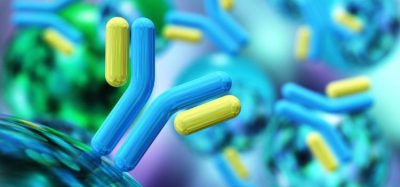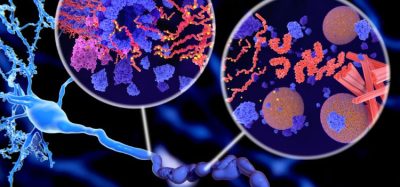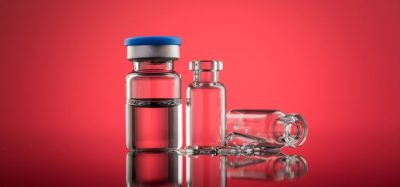Under the microscope: Time to consider perfusion?
Posted: 7 March 2024 | Fujifilm | No comments yet
Erik Vaessen, Chief Business Officer at FUJIFILM Irvine Scientific, reveals the benefits of continuous culture processing and considerations for optimal bioproduction.
Can you give a brief introduction on perfusion culture processing and its benefits?
Perfusion culture has been used since the 1980s to produce different commercial molecules, primarily recombinant proteins in adherent cells. For a time, the industry moved away from perfusion due to the advent of high yield suspension fed-batch culture processes. Over the past few years, we have seen a resurgence in the use of perfusion due to improved cell line stability, the growth of single use technologies, and advances in automation. In its basic form, perfusion, or continuous processing, is a continuous, short- or long-term culture process in which the culture environment is kept constant by exchanging fresh medium for spent medium. The goal in perfusion is to maintain a high cell density culture and lower concentrations of waste products inside the bioreactors; thus, allowing large volumes to be harvested from a single batch and promoting a quicker time to market for large-scale manufacturing.
Perfusion also offers a handful of other benefits:
- Efficiency & flexibility – Perfusion culture affords a reduction in downtime, cleaning and labour, increasing productivity over time while simultaneously accommodating the production of diverse product types
- Smaller footprint and fewer production runs – The bioreactors used in perfusion are smaller than those used in fed-batch processes, making it easier and more cost efficient to scale-out throughout clinical and commercial manufacturing.
- Higher protein quantity and quality – Constant swapping of media and product quickly stabilises the cell culture, limiting stress and detrimental build-up of waste, yielding better results.
Together, these perfusion culture attributes provide an efficient workflow and reduce operational costs. The industry has undergone a paradigm shift in recent years, with an emphasis on evaluating all factors when considering whether to integrate perfusion into existing manufacturing workflows and facilities.
What are key considerations for optimal perfusion cultures?
Due to the unique demands of perfusion, the focus has primarily been on delivering effective media and efficient technology.
- Media – Richer, more robust media formulations are required to sustain high cell density and volumetric productivity during steady state. Rational design of a well-suited perfusion medium requires a deep understanding of cell metabolism, biochemistry, and key perfusion process parameters.
- Technology – Typical perfusion systems are fully automated and capable of real‑time monitoring of pH, temperature, agitation, and gassing. These advancements provide a useful way to control cell culture processes, ensuring optimal titers and high protein quality.
Manufacturers should analyse potential areas to enhance process efficiency through both optimised media and investment in technology when evaluating perfusion bioprocessing. Drug manufacturers should consider during early-phase developments if a scalable perfusion solution aligns with meeting the needs of their customers and industry trends.
What are some of the current challenges in perfusion processing, and how is FUJIFILM Irvine Scientific addressing them?
Implementing flexibility while maintaining sustainability is essential to the future success of the bioproduction industry. Recently we launched the new BalanCD CHO Perfusion medium, which is a complete and ready‑to‑use medium that can be adapted and scaled for a variety of perfusion culture platforms. This versatile medium, coupled with advancements in automation and single-usetechnologies (SUTs) provides researchers with the flexibility they need to become more agile.
While SUTs may sound like an environmental quandary, when paired with perfusion bioprocessing, they can help reduce the amount of waste found in traditional fed‑batch cultures. Although SUTs only account for <0.01 percent of the total plastic waste worldwide, more emphasis should be placed on developing technology to improve end-of‑life collection, decontamination and recycling efforts.
Aside from products and packaging, many companies are also shifting their environmental focus to their facilities and production lines. For example, Fujifilm has implemented a Sustainable Value Plan, a long-term CSR goal to be carbon-neutral by 2030. To support this goal, manufacturing facilities globally have adopted environmentally conscious technologies, enhanced corporate capabilities and launched new products that support that effort.
Where do you see perfusion technology going for the life science industry?
As the market introduces more innovation, I believe automation and machine deep learning will be at the forefront. Automation technology will soon be able to deliver high quality, optimised media formulations directly into a culture that continuously manufactures drug products with superior efficacy and safety profiles in a fraction of the time. Machine learning and culture monitoring can increase flexibility and give researchers insights for optimising culture productivity. Single-use technologies will continue to increase, and with that, the focus on sustainability will remain a top priority for many organisations. As with everything we do here at FUJIFILM Irvine Scientific, getting the process right the first time, on time and in full, and being able to get quality products to patients faster is the ultimate goal of our industry.
Erik Vaessen
Erik Vaessen is the Chief Business Officer at FUJIFILM Irvine Scientific, bringing over 20 years of experience to their life sciences division. He studied at Wageningen University in the Netherlands and received his PhD in Biochemistry from the University of Fribourg in Switzerland.
For further information, visit: www.irvinesci.com
Issue
Related topics
Biopharmaceuticals, Bioprocessing, Manufacturing, Sustainability








